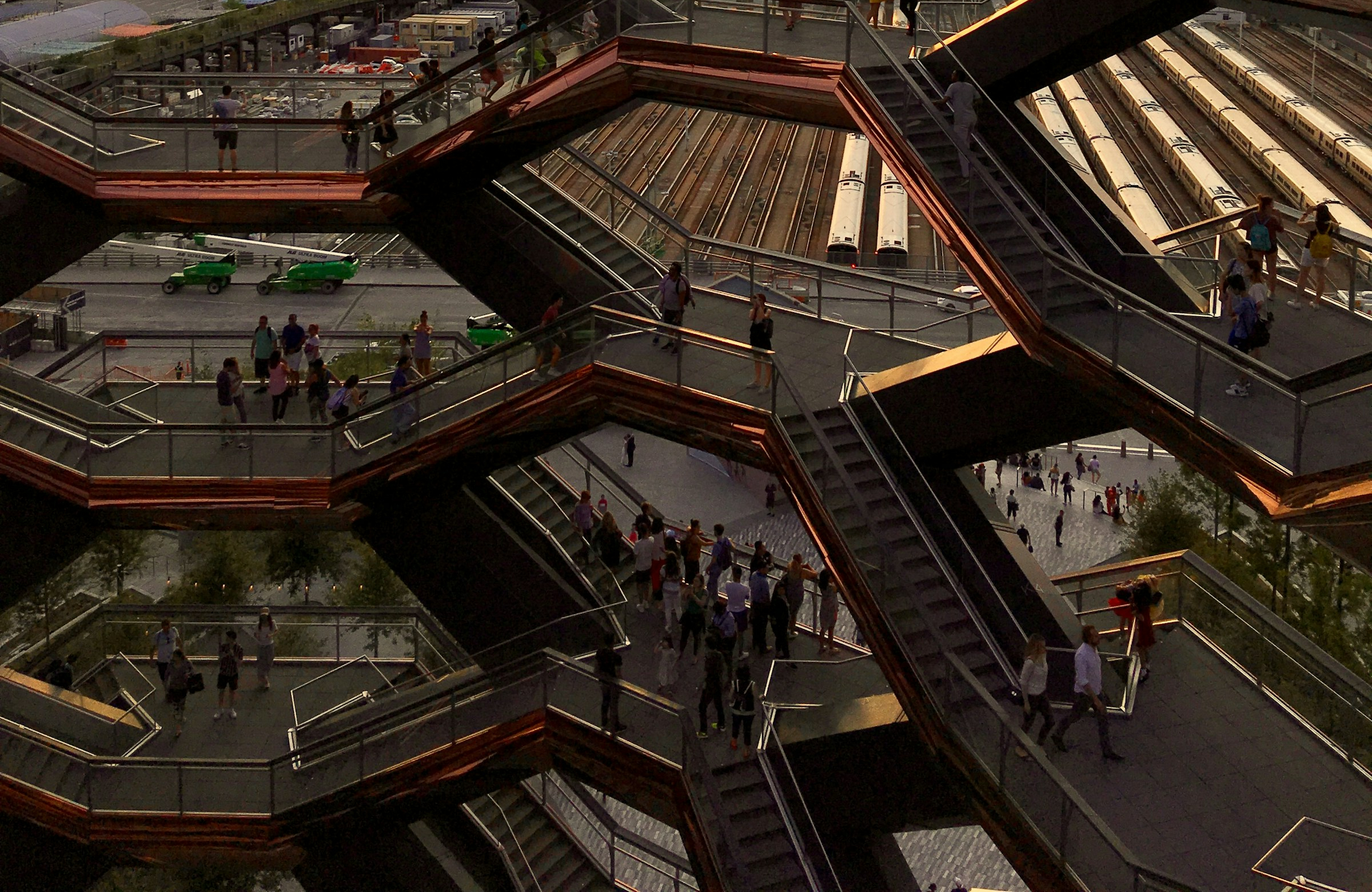
There are various important things to mention when discussing innovative designs in modern bridge construction. From cutting-edge materials to groundbreaking structural concepts, they are pushing the boundaries of engineering and architecture! Therefore, it’s important to highlight the transformative impact of innovation on infrastructure, shaping how we connect and traverse our urban landscapes.
Technological advancements
Technological advancements have revolutionized bridge construction, significantly improving efficiency and safety. By integrating cutting-edge technology, engineers can now design and build structures with unprecedented precision and accuracy.
Advanced materials like carbon fiber and high-performance concrete have also replaced traditional materials, enhancing the durability and lifespan of bridges. Also, incorporating sensors and monitoring systems enables real-time data analysis, allowing engineers to detect potential issues before they escalate!
Sustainable designs
Sustainable bridge designs help create a resilient infrastructure that combats climate change. Sustainable designs include those constructed with recycled materials, such as reclaimed wood or steel, and structures equipped with solar panels or green roofs to generate renewable energy.
Features like rainwater harvesting systems and permeable pavement also help reduce runoff and minimize water pollution!
Adaptive and resilient designs
Adaptive and resilient designs are important aspects of innovative designs in modern bridge construction, ensuring infrastructure can withstand various challenges.
By integrating flexibility and durability into structures, engineers can enhance their ability to adapt to changing environmental conditions, such as extreme weather events or seismic activity. That improves safety and reduces maintenance costs over time, as structures are better equipped to withstand wear and tear.
Prefabrication and modular construction
Prefabrication and modular construction techniques have improved how bridges are built, offering numerous benefits.
By assembling components off-site in controlled factory environments, construction time and costs are appreciably reduced. Prefabricated sections can also be manufactured with precision and quality control, ensuring consistency and durability.
In addition, modular construction allows greater flexibility and customization in design. That easily accommodates various project requirements and site conditions! This approach minimizes disruption to local communities and the environment, as construction activities are streamlined and less invasive! Prefabrication also enhances safety on-site by reducing the need for complex assembly tasks and exposure to hazardous conditions.
Logistics and Moving Solutions in Construction Projects
When executing these innovative bridge construction projects, efficient logistics and expert moving solutions are important. That is where Relosmart Movers Hong Kong shines. Renowned for their expertise in logistics and moving, they play a major role in ensuring the seamless transportation of materials and equipment. Whether transporting high-performance concrete, delicate sensors, or large prefabricated sections, they ensure that all materials arrive on-site in perfect condition and on time.
This efficiency is essential in minimizing disruptions and maintaining the momentum of construction projects. In addition, they adopt eco-friendly moving methods and materials, contributing to the reduced environmental impact of bridge construction projects. Their services are not just about moving items from point A to B. They provide smart, sustainable logistics solutions that complement the innovative spirit of modern infrastructure projects.
Smart technology
Smart bridge technology is transforming the landscape of infrastructure with its innovative capabilities. Engineers can monitor and manage conditions in real-time by integrating IoT devices, sensors, and data analytics into bridge infrastructure.
This proactive approach to maintenance helps detect potential issues before they escalate, ensuring the safety and reliability of bridges. Likewise, advancements in smart bridge technology enable the implementation of solar-powered smart roads, which generate renewable energy and enhance sustainability. These roads can incorporate features like embedded sensors that collect data on traffic patterns, road conditions, and environmental factors!
Iconic designs
Iconic bridge designs captivate the imagination with their architectural brilliance and engineering marvels! These structures, such as the Golden Gate Bridge in San Francisco or the Sydney Harbour Bridge in Australia, have become symbols of their respective cities, attracting tourists and admirers worldwide.
Their unique features, like graceful arches or towering suspension cables, showcase the ingenuity and creativity of their designers. Iconic bridges also serve as vital transportation links, connecting communities and facilitating economic growth. They hold historical and cultural significance, representing milestones in engineering achievement and human innovation.
As such, modern designs can pay homage to the past by incorporating elements of recognizable structures. This way, we can have the best of the past and a modern construction approach!

Iconic designs are iconic for a reason and deserve to be referenced!
Innovative structural concepts
On the flip side, innovative structural concepts push the boundaries of design, introducing new possibilities and solutions. These concepts, such as self-anchored suspension bridges or cable-stayed bridges with asymmetrical towers, challenge traditional engineering notions.
By embracing unconventional forms and geometries, engineers can achieve greater efficiency and elegance in their designs. These innovative structures captivate the imagination and offer practical benefits, such as enhanced stability and reduced construction costs! They also represent a fusion of art and science, showcasing the creativity and ingenuity of their creators.

The Millennial Bridge is a good example of innovative designs in modern bridge construction for its contemporary sensibilities.
Biomimicry in design
Biomimicry in bridge design draws inspiration from nature to create innovative and sustainable solutions. Engineers can apply natural principles to design by studying biological processes and structures, resulting in more efficient and resilient structures. For example, structures that mimic the strength and flexibility of natural materials, such as bamboo or spider silk, can withstand extreme weather conditions and heavy loads.
Similarly, biomimetic designs often incorporate features that enhance sustainability in daily life, such as natural ventilation systems or self-cleaning surfaces. By emulating nature’s wisdom, biomimicry in bridge design improves the performance and durability of structures and contributes to a more sustainable environment!

This approach can lead to some truly unique-looking structures!
Interactive and multi-functional structures
Interactive and multi-functional bridges redefine the role of infrastructure in our communities, offering more than just transportation.
They incorporate public spaces, recreational facilities, and green spaces into their design, creating vibrant hubs for social interaction and leisure activities. For example, bridges with pedestrian walkways, cycling paths, and outdoor seating areas encourage active lifestyles and promote community engagement.
Likewise, multi-functional structures can serve as venues for cultural events, art installations, and performances, enriching the cultural fabric of cities. By integrating diverse functions into design, these structures become integral parts of urban landscapes, enhancing the quality of life for residents and visitors alike.
Ultimately, interactive and multi-functional bridges contribute to sustainable development by optimizing land use and fostering a sense of place and identity within communities!
Employing the best innovative designs in modern bridge construction
Our exploration of innovative designs in modern bridge construction shows that creativity and ingenuity are driving forces in shaping the future of infrastructure. From sustainable materials to interactive features, designs continue to evolve, meeting the demands of our ever-changing world. By embracing innovation, we pave the way for safer, more efficient, and more environmentally friendly transportation networks!





There are no comments yet